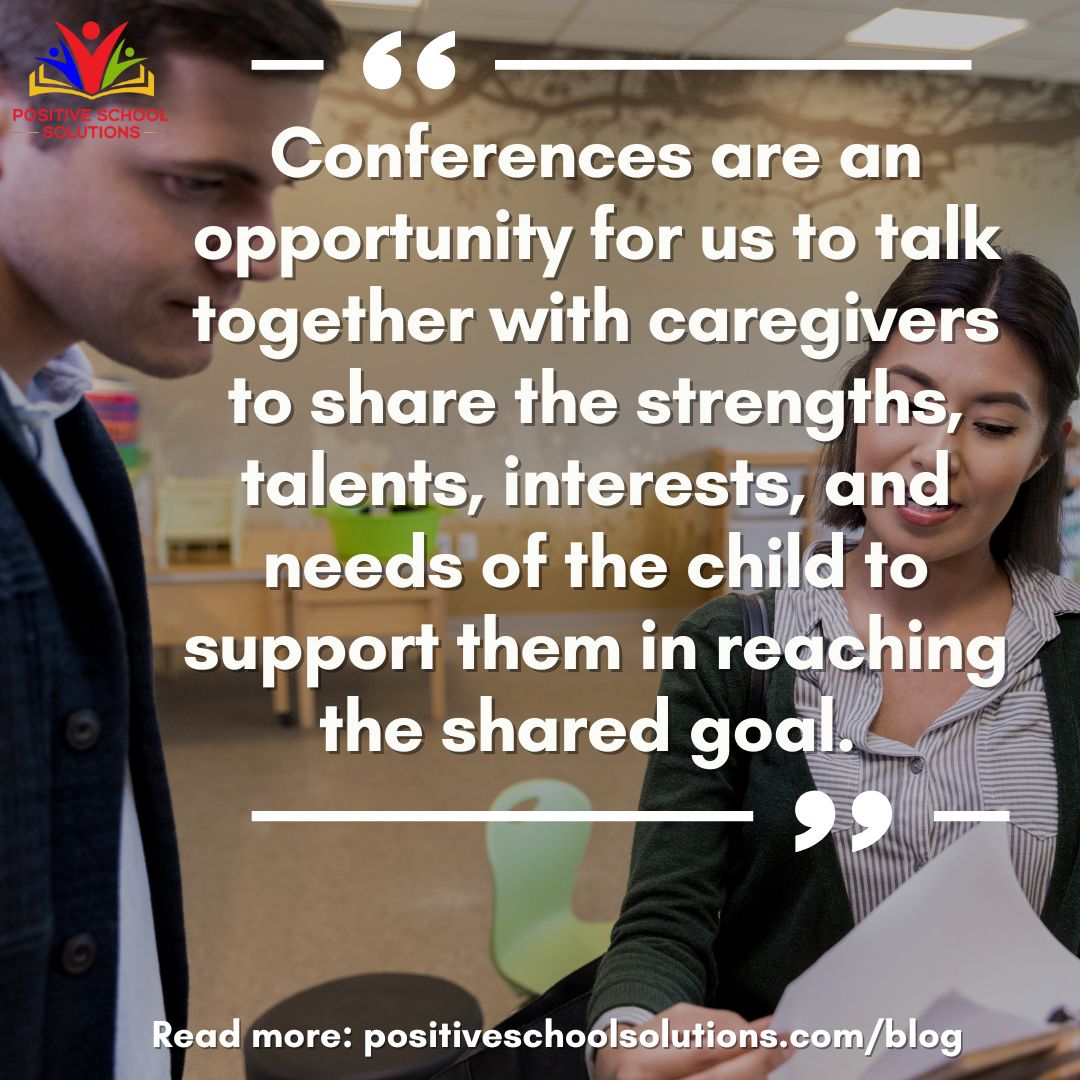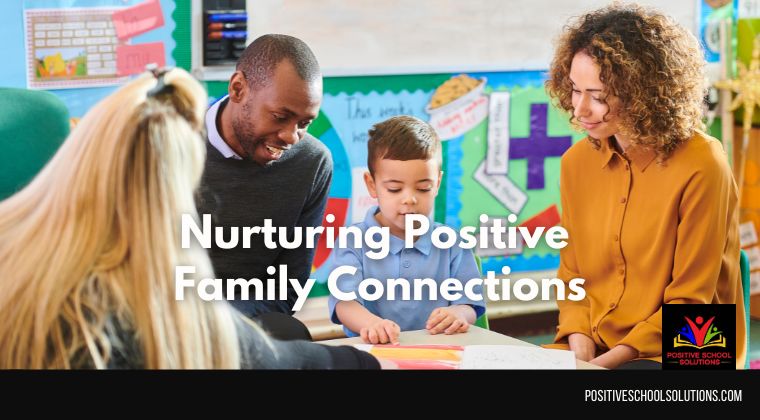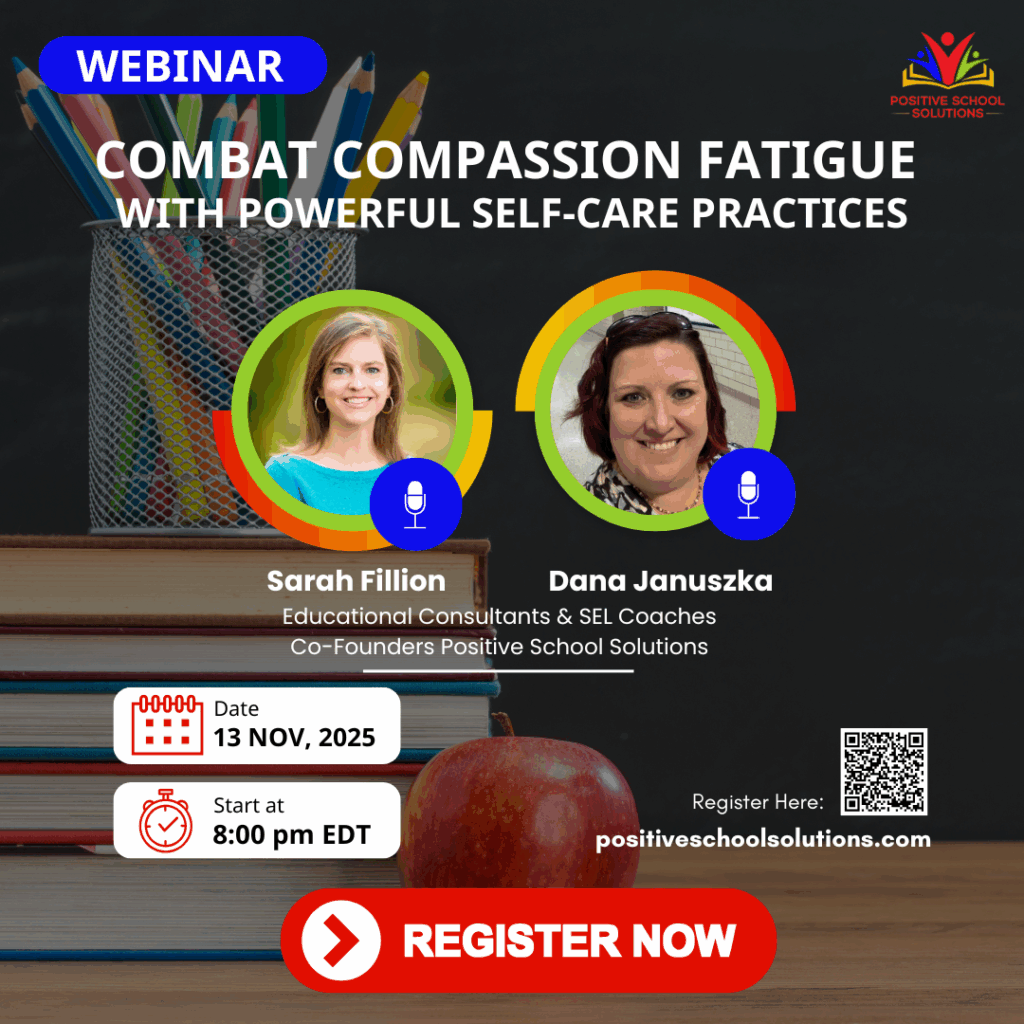 Caregivers are our students’ first teachers. By having this commonality, both being teachers (albeit in different capacities), it is important to focus on the shared goal: wanting the child to experience academic achievement and grow into a caring community member. Conferences are an opportunity for us to talk together with caregivers to share the strengths, talents, interests, and needs of the child to support them in reaching the shared goal.
Caregivers are our students’ first teachers. By having this commonality, both being teachers (albeit in different capacities), it is important to focus on the shared goal: wanting the child to experience academic achievement and grow into a caring community member. Conferences are an opportunity for us to talk together with caregivers to share the strengths, talents, interests, and needs of the child to support them in reaching the shared goal.
In yesterday’s blog, we discussed the preparation, planning, and research that supports an engaging conference. Today, we’re going to delve into a few tips about how to engage caregivers during the conference, ensuring that the conference is a two-way conversation where both parties have opportunities to talk, be heard, and listen to each other.
One way to increase engagement throughout the conference is to plan on pausing and asking questions followed by actively listening to the response with curiosity and interest. Below are some questions you might use in your conference. You can add these directly to your conference planning sheet as a reminder, and here is both a printable template and fillable template for you to use!
- “What are some goals you have for your child?” and then once a few are listed ask, “Which one feels like the most important to you?”. Asking that follow-up question will engage the caregiver and make sure you know what is most important to the family. (Here is a sample Google Form you can use for Conference Sign-Up & Goal Setting – be sure to click the pencil in the lower right corner to make a copy so that the information comes to your email and so you can adjust the questions and text as needed.)
- To receive more thoughtful responses, consider providing a heads-up in your conference sign-up sheet, such as “To start the conference, I’ll be asking you to identify one or two goals for your child in ___ grade.”
- State a personal fact that you have learned about the student. Then ask caregivers follow up questions like:
- What other interests does ____ have?
- Has ____ always been interested in ___?
- Given ____’s passion for building, I bet you have seen some major construction projects at home. Are there any that you would like to tell me about in particular?
- When you share information about how the student is doing socially, pause and ask the question, “Is this similar to what you see at home? Is this how ___ interacts with siblings and friends?” Many times, by asking this question, you will get a more comprehensive picture of the child. By inviting the caregivers to share information, they will feel that you care about their child and value their input; that working together results in academic achievement.
- After you have shared how the student is performing academically – sharing both strengths and areas they continue to work on, ask, “Are these the same strengths you have heard before or see in your child? Are these areas they continue to work on similar to years past? Do you have any other strengths or areas ___ is working on that you’d like to share with me?”
- Depending on your homework philosophy and schoolwide policy, you might ask a question about how homework is going. Asking a probing question such as “what level of independence is ____ able to complete homework assignments?” can engage caregivers in giving them an opportunity to address challenges. Consider having a scale or chart to refer to so you are both using the same measurement of independence.
- You might also follow the response with another question such as, “We’ve had a few different types of assignments: vocabulary practice with choice, math worksheets, independent reading, and critical thinking questions. Has ____ shared frustration or excitement over any of these assignments?”
- Towards the end of the conference, consider asking this important question: “What is the best way to communicate with you? Do you prefer a phone call, email, or text message?” Share your hopes for communicating – will you reach out when things are going well? How frequently do you hope to be in contact with each family (which may vary depending on the needs of the child)? What are some reasons you may reach out to caregivers?
In addition to pausing and asking questions, another strategy to keep conferences productive and engaging is to frame the conversation so caregivers remain open-minded. Whether you are sharing areas of growth that may be new to the caregivers or need to speak about a specific challenge you are experiencing, it is important that you deliver the message in a way that shows you care about the student and encourages the family to offer suggestions and support.
- Think about the positive attributes the student exhibits around this challenge/area of growth. For example, if the challenge is that a student frequently calls out during class, a positive might be that they call out the right answer or that they are an enthusiastic learner.
- Use a hand gesture to help create separation from the child and this challenge. For example, once you’ve stated the positive, raise your hands up to show that now the child is ready to move to the next level of success.
- Identify a first, attainable milestone for the student to reach. Let the caregivers know you will contact them when they do, so they can celebrate this achievement at home too.
A common misconception about engagement in a conversation is that there must always be talking by one party or another. By asking questions and then pausing to allow for reflection, you heighten the engagement of the conversation by providing space for thoughtful responses. By implementing these tips into your conferences, you will have a more productive conference that will leave both parties feeling like they share a common goal for the child.
For more on building relationships with families, check out our On-Demand Course: Nurturing Positive Family Connections
Written by Sarah Fillion & Dana Januszka for Positive School Solutions 2020


